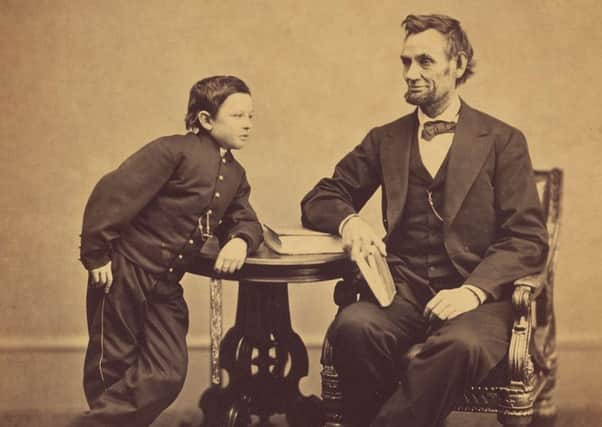Pioneering Scots photographer's Civil War images feature in new show


Now, the work of Alexander Gardner, a pioneering Scottish photographer who chronicled the horrors of the American Civil War, is to be celebrated by one of the world’s most prestigious cultural institutions.
The Paper Promises exhibition, which opens next month at the J Paul Getty Museum in Los Angeles, features portraits and battlefield images taken by Gardner, widely regarded as the world’s first modern war photographer. They include his series on the Battle of Antietam, the bloodiest single-day conflict in US history, which left more than 23,000 men dead.
Advertisement
Hide AdBorn in Paisley in 1821, Gardner left behind a career as a newspaper proprietor to emigrate in the 1850s, drawn by the images of New York-based Mathew Brady.
In Washington, his fellow emigré, Allan Pinkerton, introduced him to Lincoln. Gardner went on to photograph his inauguration in March 1861. Within months, he found himself documenting a tumultuous chapter in US history.
Maizie Harris, curator of the exhibition, said: “The first thing that springs to mind is the empathy with which Gardner pursued photography. The social consciousness of his Civil War work resonates with today’s push to use photographs to further social causes.”
She added: “His work is a valuable reminder of the foundational role immigrants played in the development of photography in the US.”
Along with Gardner’s Antietam photographs and those showing the execution of four Lincoln assassination conspirators in 1865, the exhibition includes his pictures from the late 1850s showing tribal delegations arriving in Washington DC to sign treaties.
They are among the earliest portraits of Native American people, but are not without controversy. While most delegates wore contemporary clothing, Gardner used costumes to fit them out in traditional attire.
Advertisement
Hide AdSuch techniques, Harris said, were not uncommon. Gardner retouched the negative of a studio portrait of Lincoln and his youngest son, Tad, to minimise the appearance of a posing stand.
Harris, assistant curator of photographs at the Getty, added: “Gardner and his peers didn’t just take photographs; they made them.”
LIFE THROUGH A LENS
Advertisement
Hide AdAlexander Gardner was born in Paisley in 1821, later moving with his family to Glasgow. In 1850, he and his brother James travelled to the US to establish a cooperative community in Iowa, but returned to raise more money.
Gardner purchased the Glasgow Sentinel, turning it into the second largest newspaper in the city.
In 1856, Gardner emigrated to America. He found employment as a photographer with Mathew Brady, whose pictures he had seen at the 1851 Great Exhibition in Hyde Park, New York. In 1858, Brady, whose eyesight was failing, put him in charge of the gallery.
With the start of the Civil War in 1861, the demand for portrait photography increased, as soldiers on their way to the front posed for images for their loved ones. Gardner became one of the top photographers in this field.